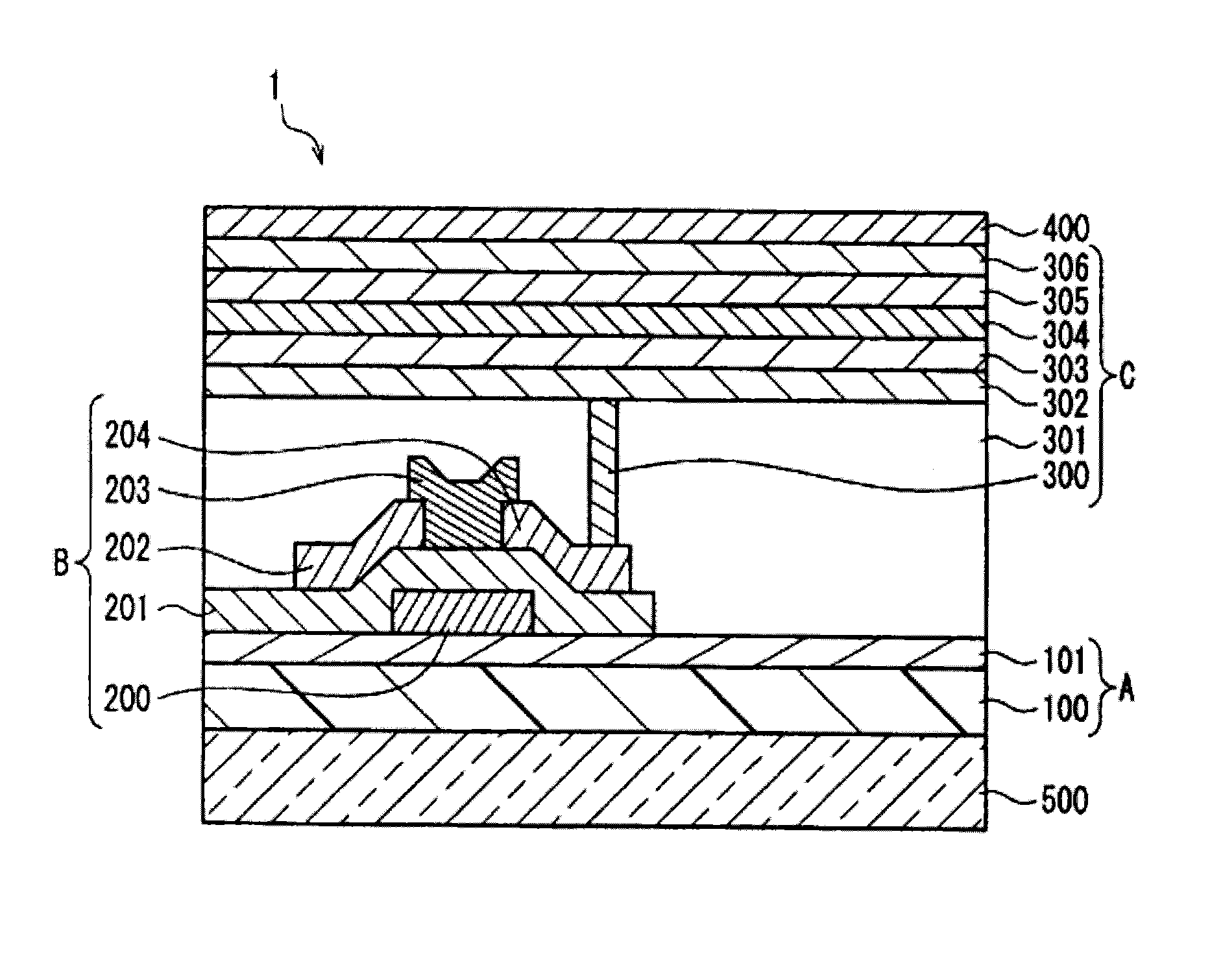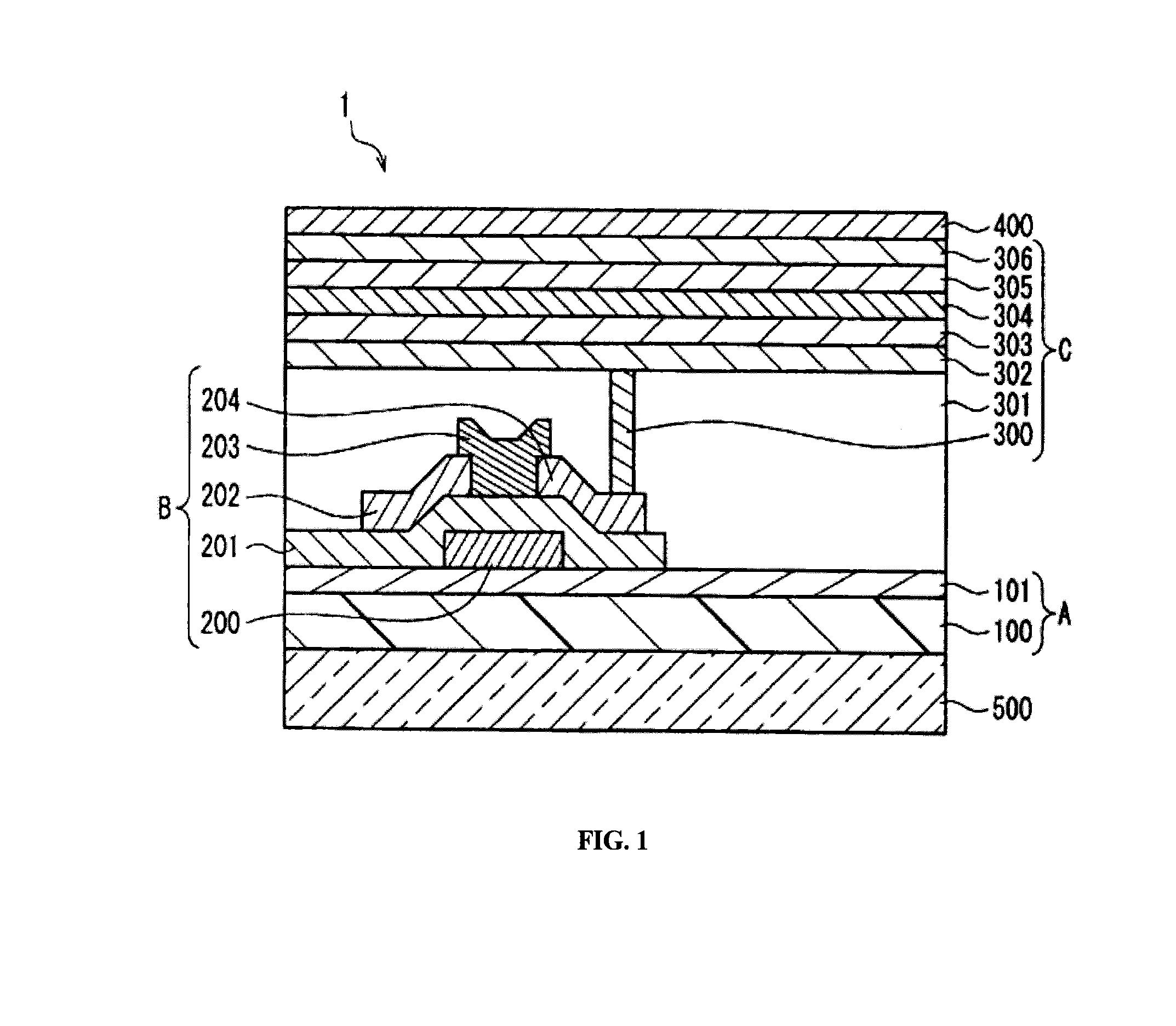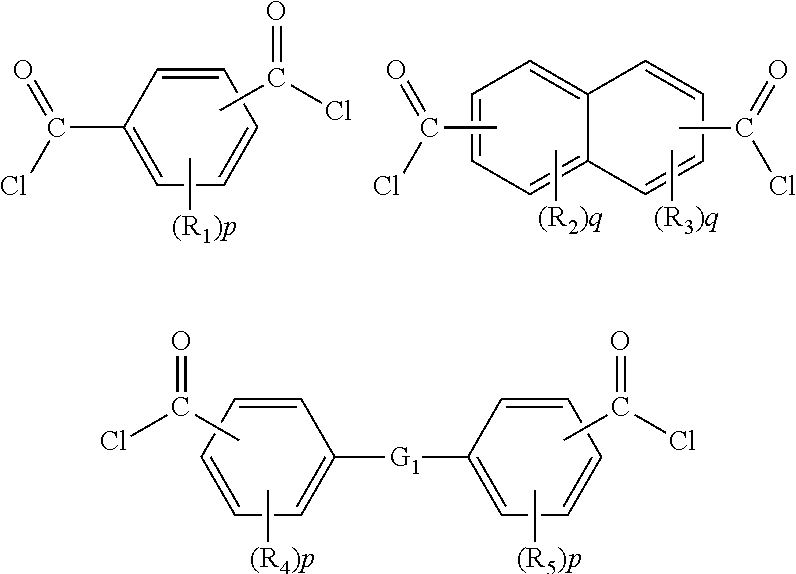Solution of aromatic polyamide for producing display element, optical element, or illumination element
a technology of aromatic polyamide and display element, applied in the field of polyamide, can solve the problems of reducing product design freedom and display robustness, no pure polymer film can provide sufficient barrier properties, and no one film can meet all the requirements
- Summary
- Abstract
- Description
- Claims
- Application Information
AI Technical Summary
Benefits of technology
Problems solved by technology
Method used
Image
Examples
example 1
[0133]This example illustrates the general procedure for the preparation of a copolymer from TPC, IPC and PFMB (70% / 30% / 100% mol) via solution condensation.
[0134]To a 250 ml, three necked, round bottom flask, equipped with a mechanical stirrer, a nitrogen inlet and an outlet, are added PFMB (3.2024 g, 0.01 mol) and dried DMAc (45 ml). After the PFMB dissolves completely, IPC (0.6395 g 0.003 mol) is added to the solution at room temperature under nitrogen, and the flask wall is washed with DMAc (1.5 ml). After 15 minutes, TPC (1.4211 g, 0.007 is added to the solution, and the flask wall is again washed with DMAc (1.5 ml). The viscosity of the solution increases until the mixture forms a gel. After adding PrO (1.4 g, 0.024 mol), the gel is broken up under stirring to form a viscous, homogenous solution. After stirring at room temperature for another 4 hours, the resulting copolymer solution can be directly cast into film.
example 2
[0135]This Example illustrates the general procedure for the preparation of a copolymer from TPC, PFMB, and FDA (100% / 80% / 20% mol) via solution condensation.
[0136]To a 100 ml, four necked, round bottom flask, equipped with a mechanical stirrer, a nitrogen inlet and outlet, are added PFMB (1.0247 g, 3.2 mmol), FDA (0.02788 g, 0.8 mmol), and dried DMAc (20 ml) at room temperature under nitrogen. After the PFMB dissolves completely, TPC (0.8201 g 4.04 mmol) is added to the solution, and the flask wall is washed with DMAc (5.0 ml). The viscosity of the solution increases until the mixture forms a gel. After adding PrO (0.5 g, 8.5 mmol), the gel is broken up under stirring to form a viscous, homogenous solution. After stirring for another 4 hours at room temperature, the resulting copolymer solution can be directly cast into film.
example 3
[0137]This Example illustrates the general procedure for the preparation of a copolymer from TPC, IPC, DADP, and PFMB (70%130%13%197% mol) via solution condensation.
[0138]To a 250 ml, three necked, round bottom flask, equipped with a mechanical stirrer, a nitrogen inlet and outlet, are added PFMB (3.1060 g, 0.0097 mol), DADP (0.0817 g, 0.0003 mol), and dried DMAc (45 ml) at room temperature under nitrogen. After the PFMB dissolves completely, IPC (0.6091 g 0.003 mol) is added to the solution, and the flask wall is washed with DMAc (1.5 ml). After 15 minutes, TPC (1.4211 g, 0.007 mol) is added, and the flask wall is again washed with DMAc (1.5 ml). The viscosity of the solution increases until the mixture forms a gel. After adding PrO (1.4 g, 0.024 mol), the gel is broken up under stirring to form a viscous, homogenous solution. After stirring for another 4 hours at room temperature, the resulting copolymer solution can be directly cast into film.
PUM
| Property | Measurement | Unit |
|---|---|---|
| temperatures | aaaaa | aaaaa |
| Transmittance | aaaaa | aaaaa |
| temperatures | aaaaa | aaaaa |
Abstract
Description
Claims
Application Information
 Login to View More
Login to View More - R&D
- Intellectual Property
- Life Sciences
- Materials
- Tech Scout
- Unparalleled Data Quality
- Higher Quality Content
- 60% Fewer Hallucinations
Browse by: Latest US Patents, China's latest patents, Technical Efficacy Thesaurus, Application Domain, Technology Topic, Popular Technical Reports.
© 2025 PatSnap. All rights reserved.Legal|Privacy policy|Modern Slavery Act Transparency Statement|Sitemap|About US| Contact US: help@patsnap.com



